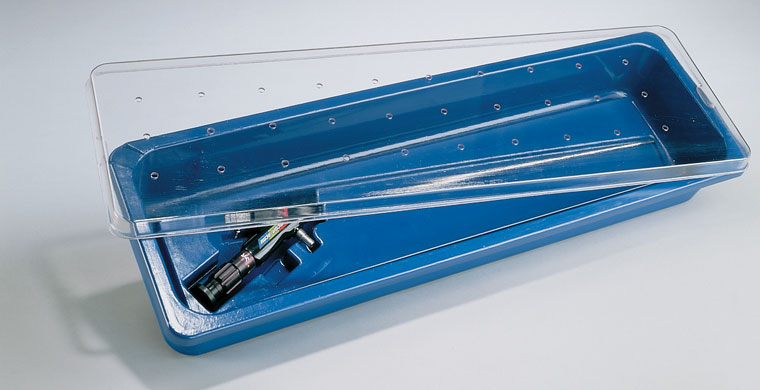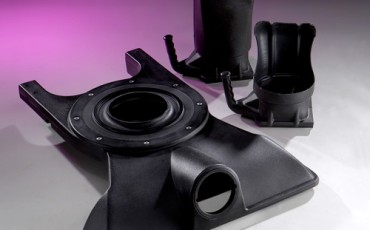
Plastic thermoforming differs from injection molding in terms of tooling, materials, production, part quality, and finishing. In Part 2 of this series, we’ll compare plastic thermoforming with injection molding in terms of materials. Part 1 examined tooling.
Plastic thermoforming and plastic injection molding both use thermoplastic materials to produce plastic parts. Thermoplastics are a broad category of plastics that can be heated and cooled, and then melted and cooled again. Examples include acrylic/PVC, HIPS, HDPE, LDPE, PP, PETG, and polycarbonate.
For product designers, choosing the right thermoplastic material means asking and answering a series of questions.
- What is the application?
- Do any regulatory requirements apply?
- Does the part require a specific finish, color, or texture?
Thermoforming and injection molding both support color matching and part textures, but they’re different manufacturing processes. So how does thermoforming work, and what are its advantages in terms of textured parts?
Plastic Thermoforming Materials
Thermoforming uses flat plastic sheets that are supplied in a variety of material types, colors, finishes, and thicknesses. The sheets are pre-heated and brought into contact with a mold using vacuum, pressure, or direct mechanical force. To create textured parts, either the sheet or the mold can be textured.
Plastic injection molding doesn’t provide this type of flexibility. Unlike thermoforming, injection molding uses plastic pellets instead of plastic sheets. The pellets are melted, then injected into a closed cavity via hydraulic pressures. Plastic pellets come in different material types and colors, but the only way to achieve a textured part is to use textured tooling.
This has implications for production costs. Complex tooling costs more to produce, and higher production volumes are then required to lower the per-part cost. For lower-volume runs then, thermoforming with textured sheets is a cost-effective alternative to injection molding.
The tooling that’s used for injection molding is also more expensive because of multiple actuating pieces and the strength that’s required under significant pressure. Thermoforming controls dimensions on one side – the tool side. By contrast, injection molding can control both sides and create walls with different thicknesses.
Ask Gregstrom About Plastic Thermoforming Materials
In Part 3 of this series, we’ll continue our discussion of plastic thermoforming vs. plastic injection molding in terms of production volumes and costs. Subsequent blog entries will compare the two manufacturing technologies in terms of part quality and finishing. Until then, please contact us if you’d like to learn more about thermoforming.


